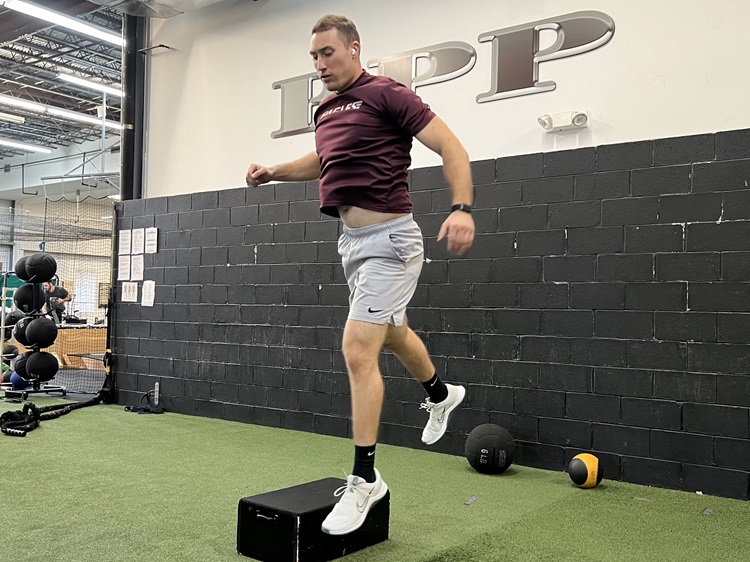
When most of us think of what comprises a great strength training program for baseball players, we think of training force production. While this is crucial to enhance performance, the dissipation (absorption) of force is vital not only to performance, but for reducing the risk of injury as well. We can’t talk about either force production or dissipation without talking about plyometric training. Numerous studies have shown that performing plyometric training for baseball players:
-
- Improves soft tissue quality
- Helps reduce the risk of injury
- Increases throwing velocity
The main goal of plyometrics for baseball players is to help turn early off-season gains into more explosive movements by decreasing the time going from the eccentric to concentric phase, in other words improving their “reactive strength”.
This will help them better develop maximal forces in minimal time during lead leg blocking or change-of-direction speed just to name a few. They are also great for gradually introducing back load to the tissue while rehabbing an injury. There are three different phases to baseball plyometrics and the phase in which we start an athlete in will be dependent upon the level of reactive strength (RSI) he demonstrates during the assessment.
S. Leg Drop Jump
1. Baseball Plyometrics – Eccentric Phase
The eccentric phase is where the muscle is stretched to load, much like loading up a slingshot or a squat in preparation to jump.
Training: Initially, the goal should be to introduce athletes to Slow SSC exercise in order to correct technique in jumping and landing mechanics.
Heiden & Stick
2. Baseball Plyometrics – Amortization Phase
This is the transition from the eccentric to the concentric phase. The purpose of performing pure plyometrics for baseball players is to decrease the time spent in this here in order to create more explosiveness in the concentric phase.
Training: Introduce more moderate intensity fast SSC exercises such as repeated hops over very low hurdles. The focus remains on short, sharp ground contact times.
Medial-Lateral Line Hops
3. Baseball Plyometrics – Concentric Phase
This is the end-result (force) produced from the previous 2 phases.
Training: The focus is now on high-output, maximal-effort reactive strength training. In this phase, measurement of ground contact times and the reactive strength index are ideal to help optimize exercise intensity, and track progress. Methods at this point should mimic movements of the sport.
Reactive Heidens
Rehab
Plyometrics are also an equally important part of any well-structured rehabilitation program as well. We give our baseball players coming off of an injury or returning from PT, a progressive plyometric program approx. one month prior to beginning their throwing programs. This helps get back some “baseline” power development as well as getting tissue quality back in the game.
Whether you’re in-season off-season or coming back from an injury, plyometric training should be included in the program design for baseball players. Like anything, it’s just all about the dosage you prescribe.
Remember, don’t just train the output, train the input as well.
See ya’ in the gym…
By Nunzio Signore (BA, CSCS, CPT, NASM, FMS)
You live too far to train with us in-house at RPP? You can now train with us on a REMOTE basis.


